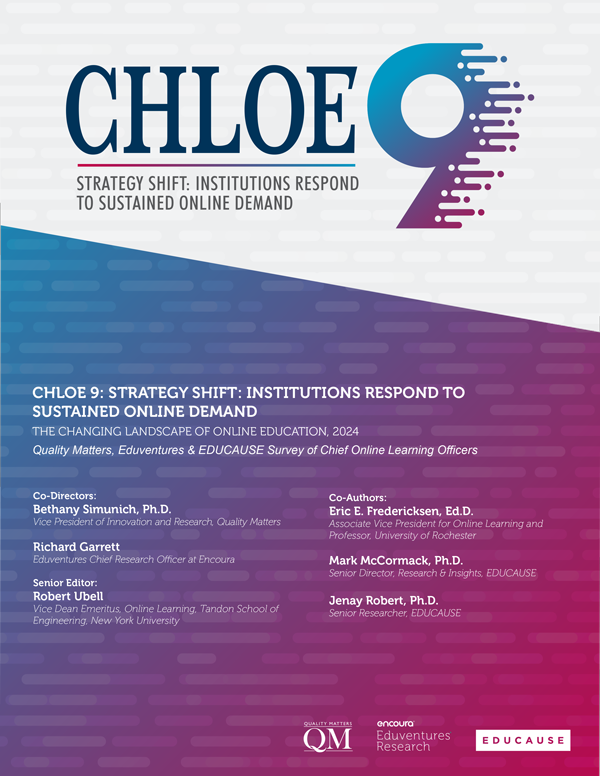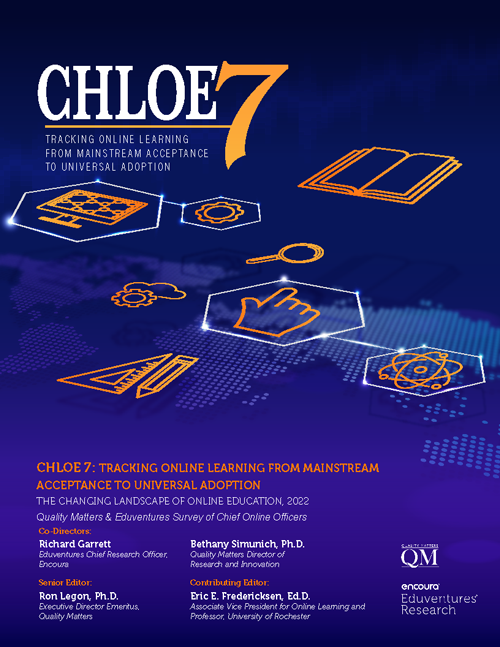CHLOE 9 | Strategy Shift: Institutions Respond to Sustained Online Demand
The ninth installment of the Changing Landscape of Online Education (CHLOE) report, produced by Quality MattersTM , Eduventures® and Educause — offers an overview of the current state of online learning in higher education as well as insights into its future development. The report was compiled by surveying chief online officers (COLOs) — the professionals best situated to assess the current state of this ever-developing field — at U.S. two- and four-year colleges and universities.
https://qualitymatters.org/qa-resources/resource-center/articles-resources/CHLOE-9-report-2024











